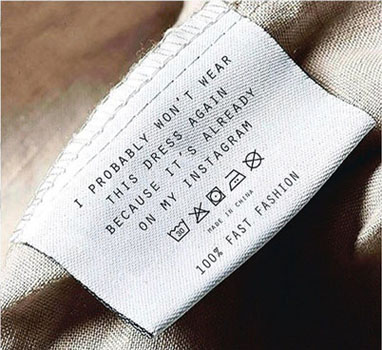We’ve come at the end of Dutch Sustainable Fashion Week.
Hopefully, you’ve become much wiser on why a fashion revolution is very necessary or maybe you’ve been greatly inspired? Surely let me know!
For those still in doubt: Yes, you should care about Fair Fashion.
If you care about the world but you care more about your style, no worries, I get it.
Fashion is about our inner selves, about self-expression and about how we portray yourself to the outside world.
Hooray! Hands up for fashion!
It’s cheap, it’s widely available, it changes fast and we can afford to change with it and just reinvent who we are. What’s not to like?
But how can a retailer sell clothes cheaper than a sandwich and still make huge profits? You probably don’t want to know but you should.
“How is it possible that a garment is cheaper than a sandwich? How can a product that needs to be sewn, grown, harvested, combed, spun, knitted, cut and stitched, finished, printed, labeled, packaged and transported cost only a couple of euros? It’s impossible.” (Quoting Li Edelkoort, make sure you check her ‘Anti-fashion Manifesto for the next decade’)
The world is paying a high price for today’s cheap fashion.
Fast fashion made fashion democratic, but at a cost. Fashion used to be a luxury product, now it is disposable. You buy a dress for 15€, wear it once and then throw it out. Where has the value gone? This created quite a few problems. This in as well as the countries of production as the countries of consumption.
- Modern slavery is a common practice. To be quick and cheap the factories put schedules and cost ahead of workers’ wage, safety, health and rights.
- It contributes to the decline of local textile industries and traditional culture with it. African markets, for example, are flooded with cheap clothing from Western over-production and second-hand collectors. Locally manufactured items can not compete with these and stop to exist, together with the traditional textiles, prints, techniques, shops, .. The economical and cultural impact of this is huge.

- The environment pays too. Fashion is the second largest polluting industry (Oil being the number 1 polluter). It’s polluting in several stages;
– Textile has one of the largest water footprints and exhaust local water supplies. The water is used for as well as cultivating for instance cotton but also the dying process consumes vast amounts of water.
– Various hazardous toxins and pesticides are used to grow and treat textiles and leathers. Often these flow back to the waterways, affecting local environment and communities who depend on on it for their livelyhoods.
– After production, these toxins can affect you, who wears it. Many garments contain hormone disrupting and cancer causing amines. When you wash them, these chemicals are released and pollute the water kilometers from where they were produced.
– Piles of lasts’ season items end up in landfills. Just to give an idea; an average piece of clothing lasts 2.2 years before being discarded. Americans generate almost 13 million tons of textile waste per year, often these pieces are worn only once.
And a lot of these modern fabrics like polyester, nylon and acrylic don’t decompose, thats tons of waste just being there for a long, long, very long time. - Quality has decreased. Obviously to produce fast and cheap, you’d have to cut down on quality. And given the expected short life span of the items, why wouldn’t you? Chances that your grandchildren will wear your sweater or your shoes the way you might have inherited some of your grandparents, are very very slim.
- Over-consumption makes us unhappy. It’s as simple as that. You are not needy, you are wanty. And your want is created by businesses, lobbies and marketeers. If you don’t believe me, be honest to yourself, realize what you already know or just Google one of many studies to read more about it.
- Fast Fashion distorts our sense of value. If a garment feels cheap and disposable, that is how we will treat it. Why replace a button or resole a shoe if you could just get a new pair. There is no monetary or emotional involvement in purchasing fashion any more, so there is no value in it. It is just a temporary filler only to be hardheartedly be discarded few wears later.
How can this type of fashion make any sense in the world of today?
Sometimes it is just a matter of habit and of detoxing. Like the sugar you just decided to go without in your morning coffee or like the gluten that were easily banned from your diet.
Maybe we need a fashion-diet too. We do.
The collapse of garment factory Rana Plaza in 2013 in Bangladesh, killing more than 1000 started a more global awareness and the rise of so called ‘slow’, fair or ethical fashion. It aims to rethink the whole business model of fashion; not solely focussing on profit and in addition it tries to reconnect the entire supply chain with its end-users. We have to re-learn that fashion has value, that garments have value. That things of value are not to be thrown away, discarded and forgotten before anyone ever even loved it.
But how can we value what is invisible?
By making visible what goes on before you swipe your credit card at your favorite department store, slow and fair fashion wants to start a beautiful fashion-revolution.
In my next blog post, I’ll explain more on the difference and impact of slow fashion.



